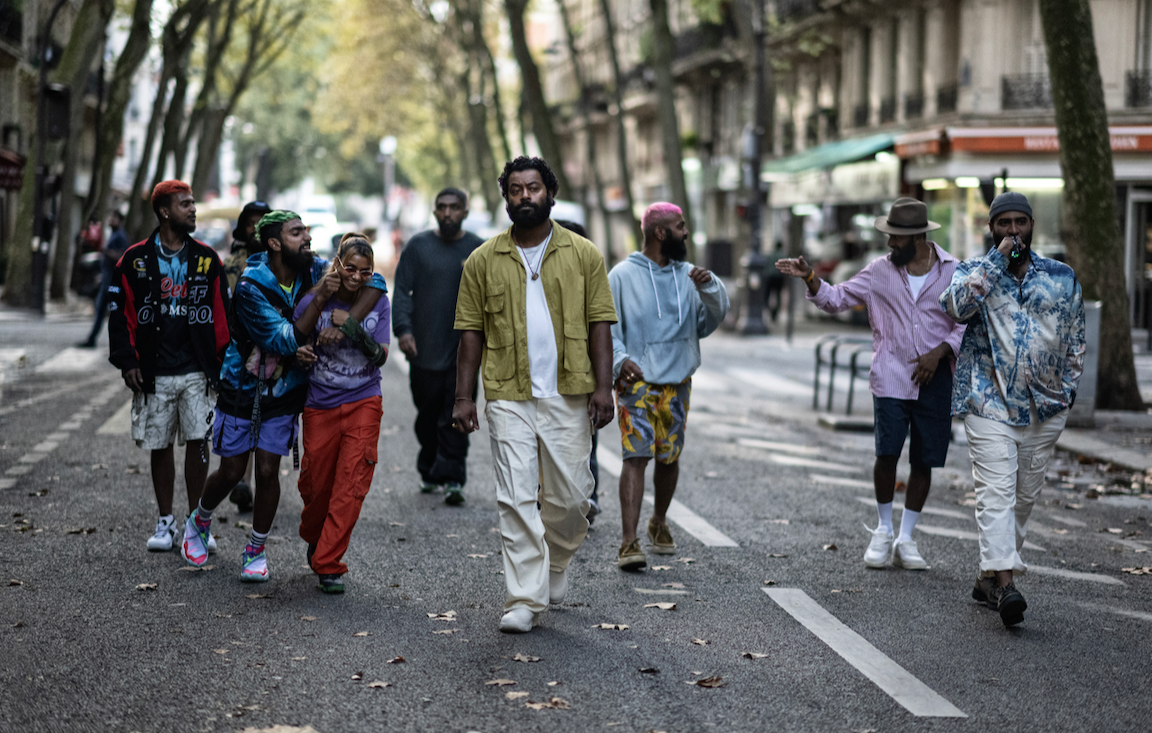
Lawrence Valin’s ‘Little Jaffna,’ a feature-length debut based on his short film, delivers a compelling story about identity. Set in France, the film follows Michael, a Tamil-French police officer, assigned to infiltrate a crime syndicate funding the Liberation Tigers of Tamil Eelam (LTTE). As Michael enters this world, his long-suppressed connection to it resurfaces, leading to internal conflict as he balances his mission and heritage.

Lawrence Valin’s ‘Little Jaffna,’ a feature-length debut based on his short film, delivers a compelling story about identity. Set in France, the film follows Michael, a Tamil-French police officer, assigned to infiltrate a crime syndicate funding the Liberation Tigers of Tamil Eelam (LTTE). As Michael enters this world, his long-suppressed connection to it resurfaces, leading to internal conflict as he balances his mission and heritage.
Valin, along with a stellar cast that includes Tamil cinema veterans Radhika Sarathkumar and Vela Ramamoorthy, bring gravitas and depth to their roles. The fresh-faced ensemble of new artists from the Tamil community in France truly envelop their roles to build a likeable group of criminals. Standout performances include Puviraj Raveendran, who is exceptional as Puvi, a top-ranking criminal who expertly balances menace and warmth.
The film shines during its intimate moments between characters and when it showcases the nuances and life of the Eelam Tamil community in France. Scenes of Michael dancing to “Jithu Jilladi” during a screening of “Theri” with his newfound friends and being teased for using a fork instead of his hands while eating, give glimpses of an authentic portrayal of diasporic experience.
The major theme of dual identity is illustrated through Michael’s struggles between duty and his conflicting French and Tamil Eelam roots. The film does an admirable job exploring this theme and is at its best when it does so. However, the film could have explored Michael’s internal conflict on a deeper level and delved more into the struggles faced by the people who were forced to relocate to France amidst the genocide in Sri Lanka. The most effective scenes that touch upon this topic are conversations between Michael and his Ammamma, where you learn more about his heritage, his family and even his links to the liberation struggle itself. ‘Little Jaffna’ also assumes its audience understands the Tamil genocide, which may cause those unfamiliar with its history to misunderstand the perspectives and emotional beats for the characters in the film.
In terms of historical accuracy, the film does a commendable job of portraying the horror of Sri Lankan atrocities. The timeline is however muddled at points for politicos and cinephiles alike ("Theri" for example was only released in 2016). The gravity of the 2009 genocide was also always going to be difficult to showcase in a film and the all-encompassing tragedy of the massacres is sometimes somewhat diluted in portrayal. Yet, despite the director's admitted fictional license at points, the film builds a largely sympathetic picture in demonstrating why the Tamil people turned to an armed independence struggle and why many across the world chose to support it. The final scene, in particular, is haunting.
The cinematography is great with the screen filled with vibrant colors. Maxence Lemonnier’s music complements the film well - a standout track in the soundtrack by Tamil Canadian artist Shan Vincent de Paul. Special mention goes to the stylish costume design, which enhances the film’s lived-in world filled with colour and eccentricity.
In conclusion, Little Jaffna is a fantastic directorial debut for Lawrence Valin. With its exploration of dual identity, strong performances, and immersive world-building, the film leaves a strong impression, despite opportunities for deeper exploration into its characters and themes. We hope to see more to come from this budding young talent.
____
See a clip from the film below.
